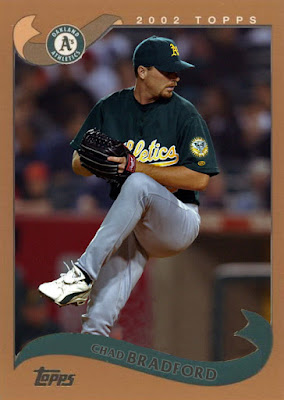It's funny, the other day Disney+'s twitter account posted that Angels in the Outfield was finally on streaming, and that was a big deal because that movie had never been officially available on streaming before, despite being a bonafide Disney product. I dunno if it was rights issues, MLB stuff, who knows. But it had been 20 years or so, so I gave it a watch. And while it's not great, it still has a lot of really fun moments, and the last act really works. Clearly not the best baseball movie of the early 90s, but still decent.
And I got to thinking about the fact that everybody always talks about, like, 1988 to 1994 as this goldmine of baseball movies [killed by, like Cobb], with all the great ones that everybody loves in that window, and while there is a lot of good stuff in there...what's even funnier is that the movie that's generally accepted as one of the best baseball movies ever made is from like 15 years later.
Moneyball is not only a movie that baseball fans enjoy, but it's a movie that movie fans enjoy. Baseball fans love it because they get to see depictions of David Justice and Carlos Pena and Scott Hatteberg, and movie fans love it because it's a great story and a really great script. This movie has immortalized obscure baseball names like John Mabry, Chad Bradford, Jeremy Brown, Ricardo Rincon and Jeremy Giambi. And it's also shed more light on just how good the 2002 A's were, even with the low-budget mentality.
It turns out I had a ton of 2002 A's Should Have Been customs premade, and so I'll roll them out here for y'all to enjoy. These are cards of integral 2002 A's pieces that Topps did not make cards of.
Chad Bradford, being one of the low-budget oddities that led to the A's success that year, needed a 2002 custom. Bradford was known for his impeccable relief numbers despite being an unconventional sidearmer. In 2002, after years of organizational neglect, he delivered his best season yet, with a 3.11 ERA, a 4-2 record and 56 strikeouts in 73 innings. This cemented Bradford's status as one of the unsung heroes of this A's team, and would pave the way for even more dominance to come with Oakland, Boston, New York, Baltimore and Tampa.
Scott Hatteberg, famously played by Chris Pratt in the film, was a former Red Sox prospect who, at 32, was looking pretty cooked. He'd been a mediocre catcher for the 90s Sox teams, and was running out of uses. The story goes that Billy Beane figured if they plotted him in at 1st they'd get a guaranteed contact hitter in the lineup, owing to the 'does he get on base' mentality, and thus Hatteberg had the best season of his career, resulting in a 3.3 WAR, a .280 average and 61 RBIs. This season would keep Hatteberg as a staple of the 00's A's squads, and would lead him to being the answer to the trivia question of 'who did Joey Votto replace at 1st in Cincinnati?'It's probably going to become harder to watch Moneyball after the team gets moved to Sacramento, but I still think it's an excellent film, and it's completely changed the way I view the 2002 season. Hopefully y'all will get a kick out of these customs as much as I do.







Nice! I'm an Aaron Sorkin superfan, so definitely a big favorite baseball movie for me.
ReplyDelete